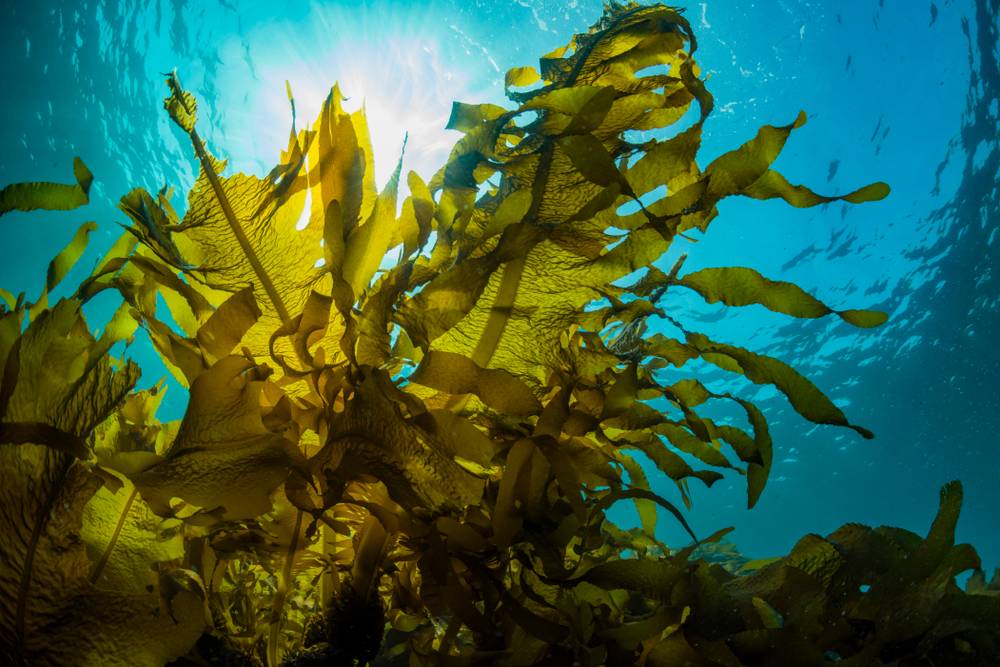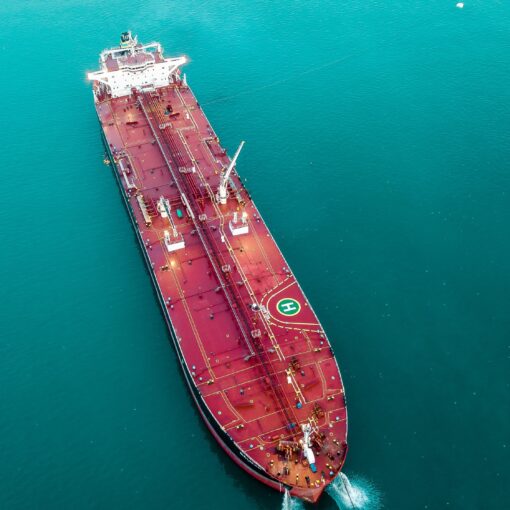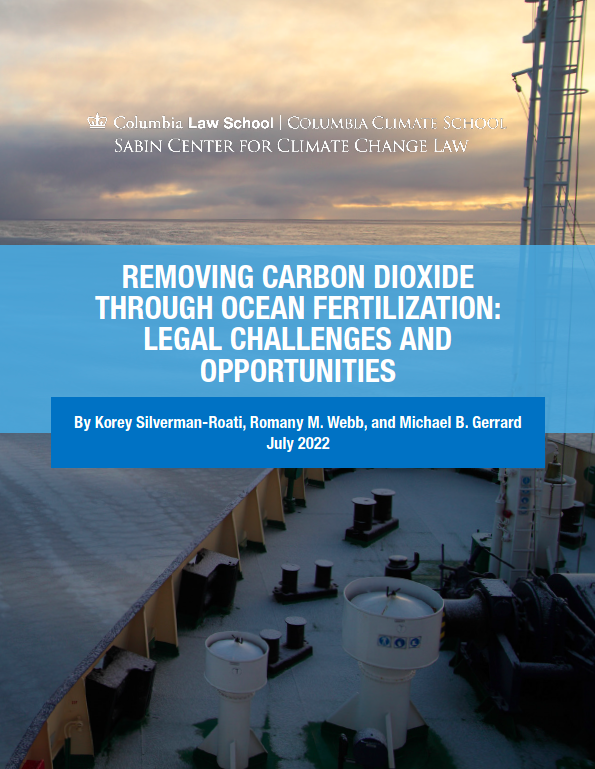By Romany M. Webb and Korey Silverman-Roati
Ocean alkalinity enhancement (OAE) is one of several proposed techniques for removing carbon dioxide from the atmosphere and storing it in the oceans. As a result of natural processes, the oceans have already absorbed around 30% of all carbon dioxide emitted by humans since the start of the Industrial Revolution, helping to reduce the rate of climate change. This natural absorption has, however, also led to ocean acidification which threatens corals, crustaceans, and other calcifying organisms by making it more difficult for them to build their skeletons and shells. OAE seeks to counteract ocean acidification, while also increasing carbon storage in the oceans. In OAE, alkaline materials such as ground rock are added to ocean waters, increasing pH levels (and thus reducing acidity) and enabling greater uptake of carbon dioxide. After a series of chemical reactions, the carbon dioxide ends up stored in carbonate sediments on the ocean floor, likely for tens of thousands of years.
OAE has the potential to remove large amounts of carbon dioxide from the atmosphere which, together with emissions reductions, would help to mitigate climate change. OAE also presents risks, however. For example, some materials proposed for use in OAE contain heavy metals, which could contaminate ocean waters and harm marine organisms. They could also act as fertilizers, stimulating the growth of certain organisms, and thereby disrupting ecosystems. Field trials in the ocean are needed to fully assess these and other effects and verify the long-term carbon storage potential of OAE. Such research and any subsequent deployment of OAE could raise a host of legal issues.
The Sabin Center’s latest white paper – Removing Carbon Dioxide Through Ocean Alkalinity Enhancement: Legal Challenges and Opportunities – analyzes the international and domestic (U.S.) legal frameworks for OAE research and deployment. As explained in the paper, there are currently no international or U.S. laws specifically governing OAE, but a number of general environmental and other laws could apply. At the international level, potentially applicable instruments include the United Nations Convention on the Law of the Sea, the Convention on Biological Diversity, and the London Convention and Protocol on Ocean Dumping. Our paper provides an in-depth analysis of whether, when, and how those and other international agreements and customary international law will apply to OAE. We also discuss the application of domestic laws, such as the federal Marine Protection, Research, and Sanctuaries Act, Clean Water Act, Coastal Zone Management Act, and National Environmental Policy Act.. As we show, none of these laws were developed with OAE in mind, creating significant uncertainty as to how projects will be treated. Much is likely to depend on exactly where and how projects are conducted. Some projects could be subject to multiple permitting and other requirements, which could create challenges for developers and add time, cost, and uncertainty.=
Read the full paper here.
Related work: The Sabin Center is preparing a series of white papers examining legal issues associated with carbon dioxide removal and storage. Previous papers have discussed the legal framework for carbon removal via enhance weathering, as well as carbon storage in the sub-seabed off the east and west coasts of the United State and the west coast of Canada. For more information about this and other related work, visit our website here.
In January 2021, the Sabin Center released a paper discussing key legal challenges and opportunities associated with both OAE and seaweed cultivation for the purposes of carbon dioxide removal. This paper builds on that prior work. It focuses solely on OAE and includes additional analysis of applicable customary international law, state permitting and other requirements, and issues relating to tribal rights (among other additions). Separate papers analyzing the international and domestic legal frameworks for seaweed cultivation, artificial upwelling and downwelling, and ocean fertilization for carbon dioxide removal are currently in development. This work is generously supported by ClimateWorks Foundation.
This is test biographical description.




